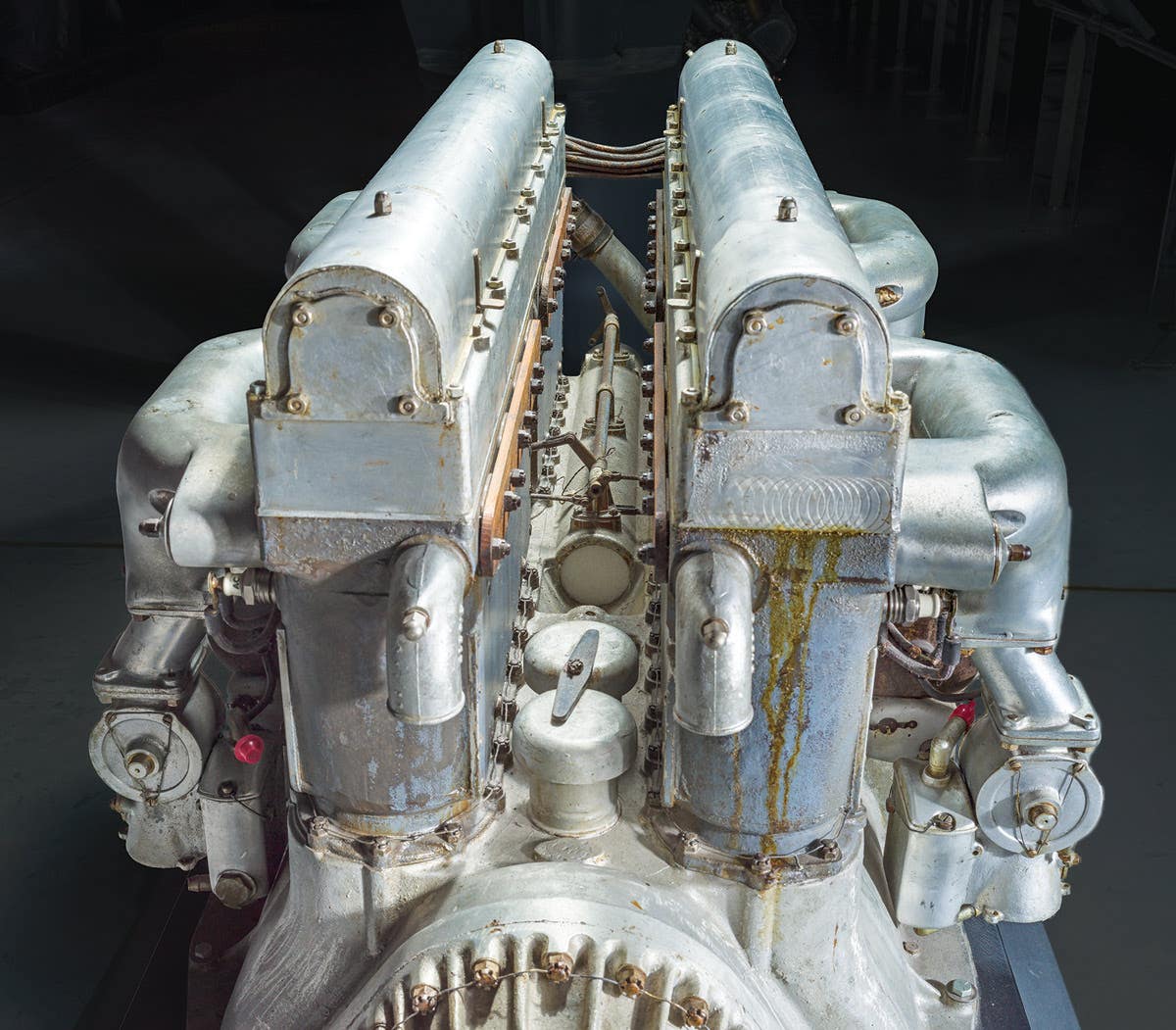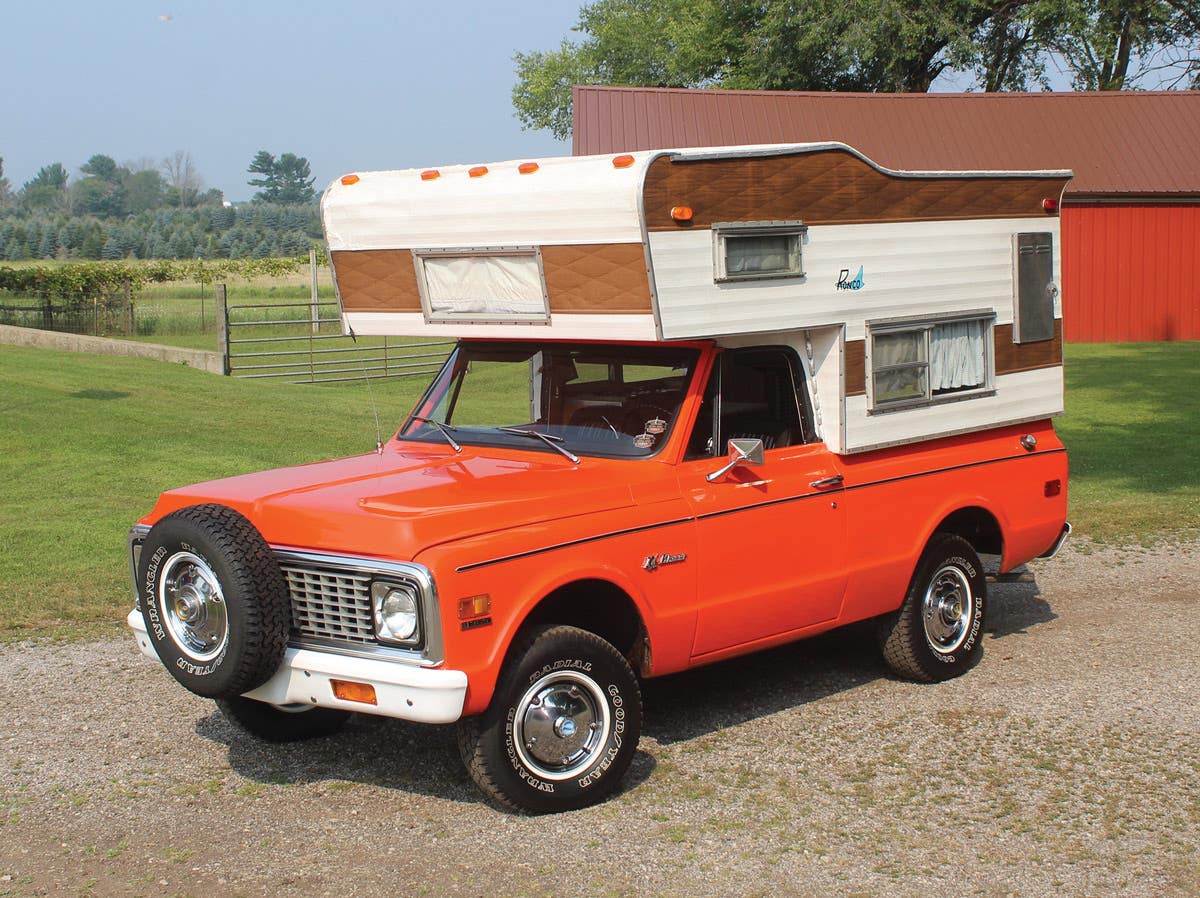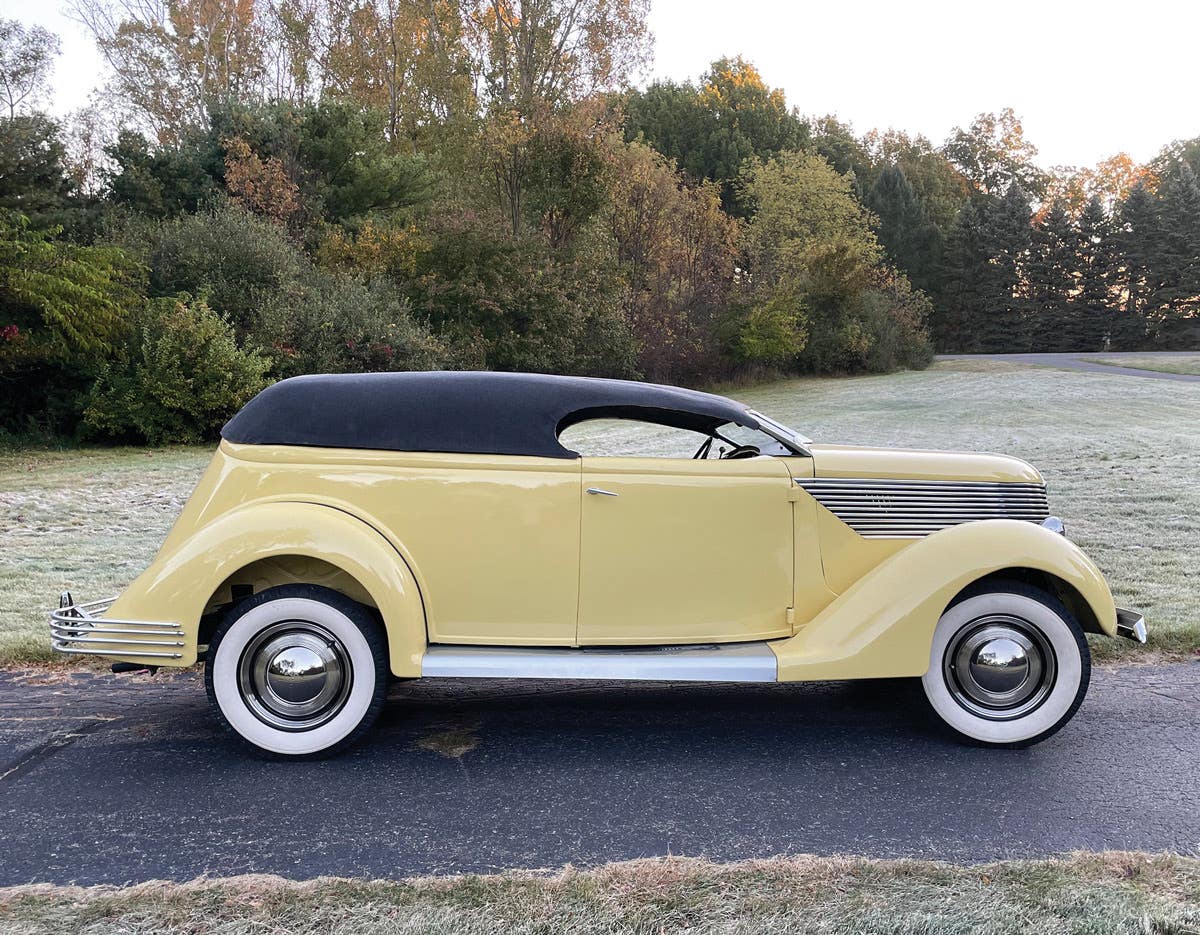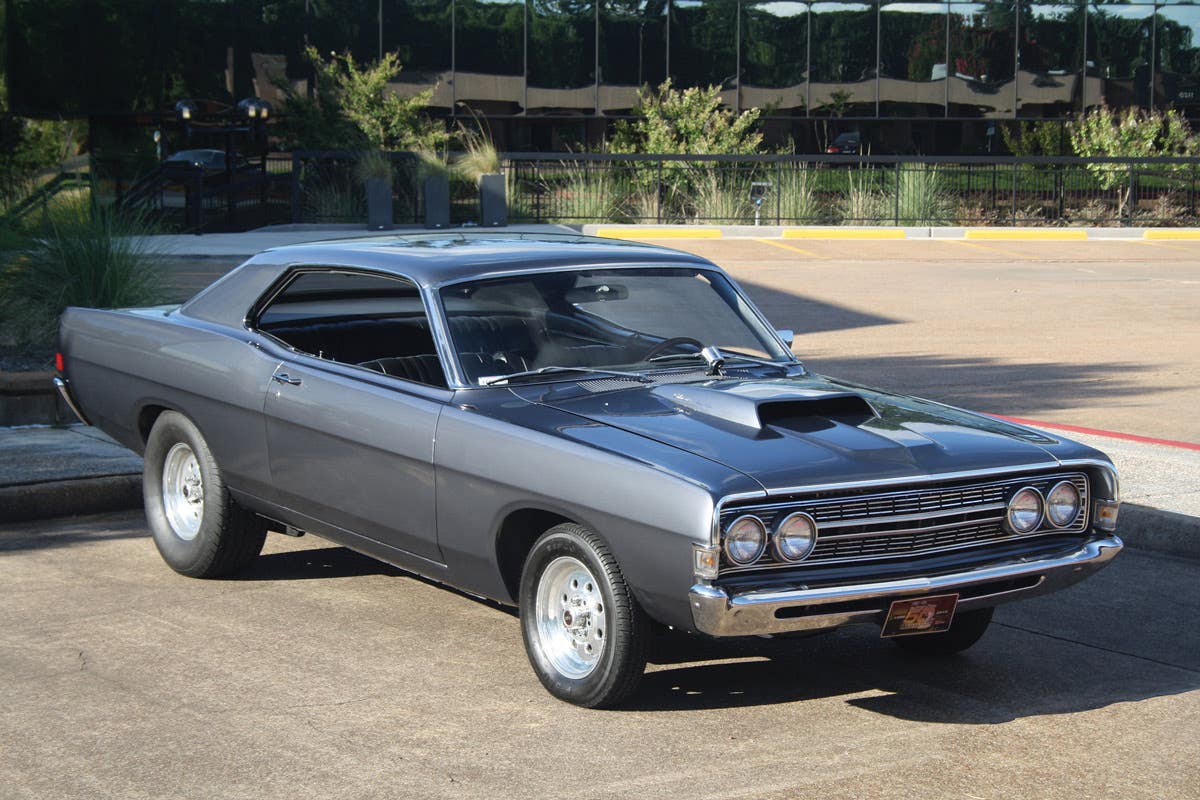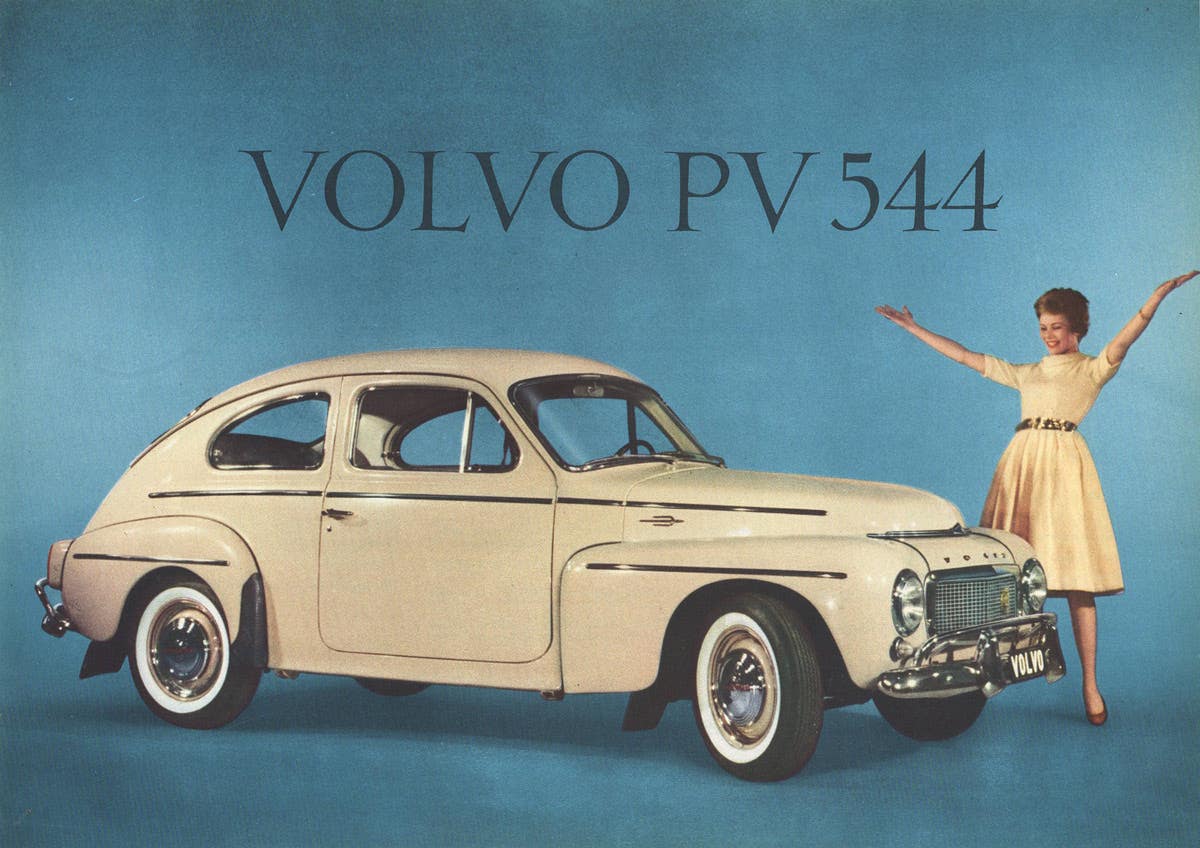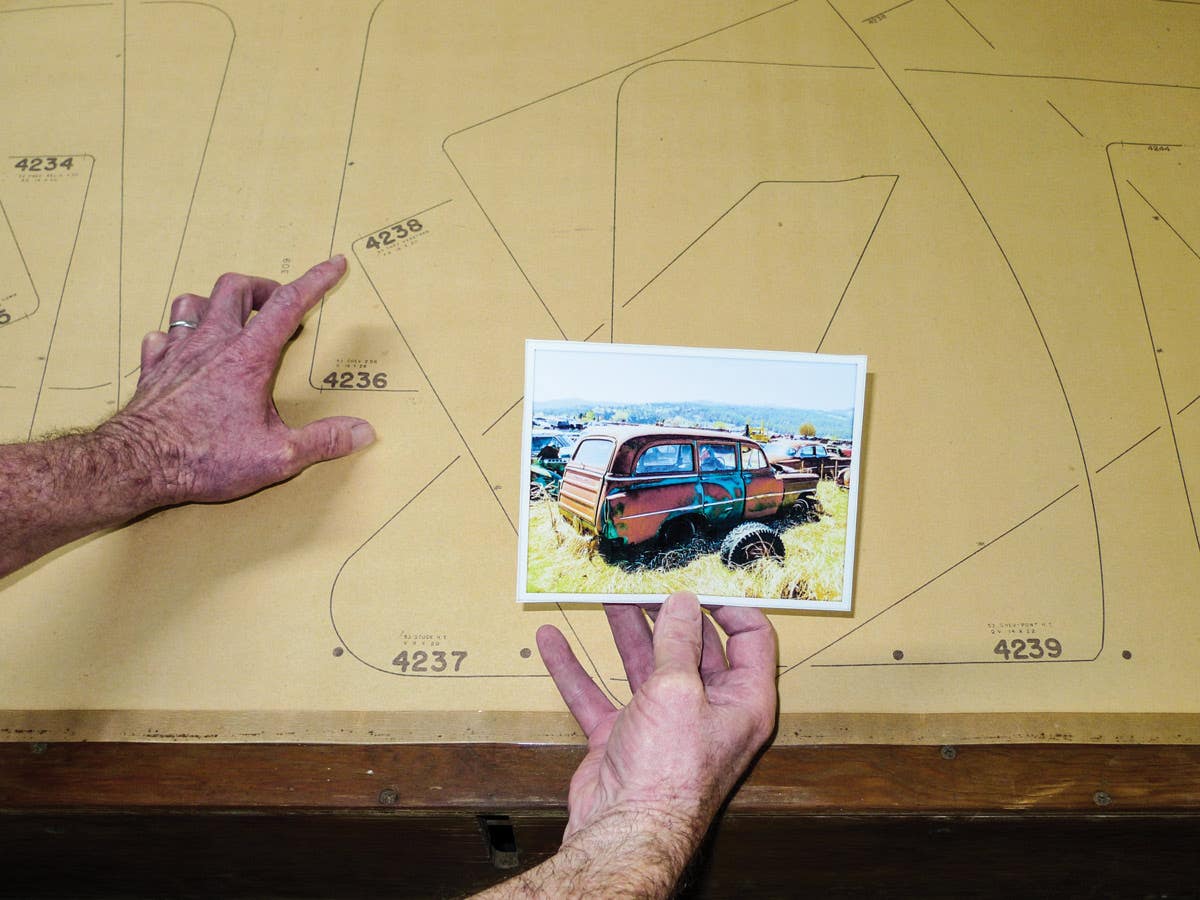No rest for auto restoration shops
Smaller restoration shops are finding that size matters when it comes time to deal with a tough economy.
Jerry Kopecky of Kopecky’s Klassics specializes in
finned MoPar restorations. Kopecky works on
world-class restorations and only accepts one car at
a time. Like other similarly focused shops, he has
backlog of work that is more than two years long.
Although new cars are a tough sell these days, restorers of old cars say owners remain actively restoring their vintage tin. And that’s a generally good sign for the state of the hobby and, specifically, for restoration shops.
In early December, three restoration shop owners who complete mainly beginning-to-end restorations reported their businesses remained as busy as ever, despite the bearish stock market and decreased prices for most collector cars.
“The hobby seems active and we’re carrying a backlog,” says Dennis Bickford of Vintage Woodworks in Iola, Wis. “Some of my vendors are very busy. My metal spinner is working 55-hour weeks. My chrome shop is perking right along.”
Vintage Woodworks restores all types of woodies and also reproduces parts for Chrysler Town and Country models. Its client base includes customers from around the world. And, of course, demand for wood-bodied cars remains strong.
“I think good cars are always going to be in demand,” Bickford said.
“Anybody in the high end is doing fine,” said Jerry Kopecky of Kopecky’s Klassics, a restoration shop that specializes in finned MoPar restorations for clients across the country. “The guys who are struggling are doing restorations for customers on a budget. The guy who is working with two kids, he’s probably not going to be doing a restoration for a while — that’s the feeling we’ve got.”
Like Vintage Woodworks, Kopecky’s Klassics has a long waiting list of customers waiting to drop their cars off at the shop.
Similarly, RPM Restorations in Lino Lakes, Minn., carries a two-year backlog, and its owner, Roy P. Mastel, is optimistic about the future.
“Most shops like ours are booked out a year or two, so it might take a year or two to change,” Mastel said. “I haven’t had any cancellations, either. There are some shops that have had cancellations. The big shops...those are the types of guys that are going to have trouble. Big shops have had to lay people off.”
Mastel cited a nearby Twin Cities restoration shop that once carried a staff of 10 people was now down to two people running the shop. Conversely, RPM Restorations, as well as Vintage Woodworks and Kopecky’s Klassics, each employ just a handful of people. These three shops also concentrate on three or fewer projects at a time to produce show-winning restorations. But in Kopecky’s experience, shops with small staffs that work on several nice, driver-quality cars throughout the year also seem to be handling the economy’s tumbles well.
“A nearby shop owner who’s a one-man band and does really nice paint and body work jobs has plenty of work,” Kopecky said. “There are enough guys around who may not want off-frame restorations, but they are doing frame-ups.”
Also aiding some of the smaller shops is their ability to accept modern-car repairs to fill in gaps between restoration work.
The pieces of success
How people in New York City are valuing pieces of paper seems to be having little affect on most restoration shops, but there have been some minor factors that both help and hurt restorers.
With inflation, the prices of some materials have increased. Recently, Kopecky saw the price of some body work materials rise about 5 percent. He also watched the price of a gallon of paint rise 8 percent in December.
“That’s a significant increase at one time, and that stuff is expensive already. We felt it and, overall, on a big project, that adds up.”
For Bickford, the price of shipping has increased, which raises the costs related to moving inventory from his mail-order parts business. Bickford said some costs have risen slightly, but others have held steady.
“Wood is very stable,” he said. “There’s probably much more supply than demand for wood,” owing to the deflated housing market. “Anything chemical has gone up, but not attrociously. It’s been going up slowly for the past few years.
“A lot of products, such as rubber, follow the commodities market, so we expect they will go down,” Bickford added.
There are other changes in the hobby that help restorers. In Mastel’s case, the continued creation of new restoration products has made his job easier while not hurting prices for his customers.
“More parts can be bought, and these cars are easier to build because of it,” Mastel said. “You can now buy one-piece floors just like the factory did, where before, they would sell you the two halves. That’s just sweet.”
Although such parts as whole floors are more expensive to purchase than sections, the cost is offset by having less labor required.
Today’s customer
Even with generally downward fluctuations of car values in 2008, Mastel notes that the profile of his typical customer remains largely the same, and with the same mind set.
Customers of Mastel’s shop, RPM Restorations, are generally in their 40s, 50s and 60s and are serious about the collector-car hobby. And even with the lower prices paid for most collector cars, his clientele remains about evenly split between investment-minded hobbyists and those simply in it for the love of old cars.
“There are two types of customers,” Mastel said. “Guys that don’t really care what they have into the car, because they don’t want to sell it. Then there are guys with dollar signs in their eyes, and you can see them already thinking about what they are going to sell it for.”
“I’ll tell some guys that they will have more money in their car than its worth, but some guys don’t care if they have 5,000 or 10,000 more than their car is worth into it. The know the market will come back.”
Kopecky agreed, particularly when it comes to well-to-do clients.
“A lot of these guys don’t like [the economy] like the rest of us, but projects like these are not that financially bad for them. A lot of them look at it as an investment that they are going to get their money back on.”
Although the quantity of restorations he’s accepting hasn’t changed, Mastel has noted a different trend among his customers, and it’s not related to the economy.
“I’m doing the same number of complete restorations and the only thing I have noticed is that people don’t really care to have their cars original anymore,” Mastel said. “I used to get nut-and-bolt restorations all the time, but that is really changing.
“Now customers want disc brakes, headers. They don’t care about having a correct bolt and all the stampings and markings and all that stuff like we always did through the 1990s.
“People are definitely building these cars to drive,” he said. “I have even taken matching motors and not put them in there so the owner could put a crate engine with a five-speed. They set the original engines under their workbenches. They say ‘I want the horsepower.’ I definitely see a big swing to people wanting to drive them.”
Weathering the storm
The recipe for a restoration shop to survive the downturn in the economy appears simple: a small staff that produces quality, knows its customers and concentrates on a specialized vehicle while managing a small number of projects at once.
“If you’re a go-getter and know your business and you network, you’re going strong,” Bickford said. “If not, you’re hurting.”
What are car prices really doing?
Everyone talks about the “falling prices” of some collector cars, but few provide the numbers. By and large, the statement does appear to be true, but only time will tell if the changing values are simply a market correction, a result of the downward economy or prove that investors are taking their money elsewhere.
Regardless of the cause, here are a few of the raw, hard numbers, pulled from the Old Cars Price Guide database, which lists values recorded at all of the major auctions held in the United States since 2000 and reported in Old Cars Weekly. These examples were pulled from 2001, 2004 and 2008. The example cars are popular with hobbyists and are commonly seen at larger auctions, thus providing multiple examples of sales.
Sales fever hit its peak in early 2006, with muscle cars such as the Hemi ‘Cuda, fetching $300,000-500,000 in No. 1 and No. 2 conditions.
The most frequently reported conditions each car was seen in were pulled from the database to further aid comparisons. All cars were in unmodified condition.
1970 Chevrolet Chevelle SS396 (350 hp and automatic transmission)
2001, No. 2 condition
$16,800; $13,900 and $17,500
2004, No. 2 condition
$31,000; $59,000; $30,000; $32,500
2006, No. 2 condition
$32,500; $40,000; $45,000; $46,000
2008, , No. 2 condition
$50,000; $41,000; $25,000; $34,000
1955 Chevrolet Bel Air Sport Coupe, V-8
2001, No. 3 condition
$18,200; $13,500; $18,400
2004, No. 3 condition
$25,500; $26,000
2006, No. 3 condition
$28,400; $31,000; $32,000; $55,000
2008, No. 3 condition
$24,800
1968 Dodge Charger (440 and automatic)
2001, No. 3 condition
$16,000; $17,500
2004, No. 3 condition
$27,000; $41,000
2006, No. 3 condition
$29,250; $42,000; $54,000
2008, No. 3 condition
$25,000
1931 Ford Model A roadster
2001, No. 3 condition
$14,000; $16,000; $25,000
2004, No. 3 condition
$18,500; $21,500
2006, No. 3 condition
$16,500; $21,000; $35,000
2008, No. 3 condition
$15,000
1970 Hemi ‘Cuda four-speed
2001, No. 2 condition
$86,000
2004, No. 2 condition
$78,000; $110,000
2006, No. 2 condition
$315,000
2008, No. 2 condition
$232,000
2006, No. 1 condition
$300,000; $450,000; $650,000
2008, No. 1 condition
$170,000; $255,000
Clearly, most of the numbers appear to be back to their pre-spike level of 2006, but the muscle cars cited in this example have actually kept a little bit of what they gained.
What does this mean to investors? Don’t sell yet. What does this mean to hobbyists? Now is the time to buy. And if you don’t have to sell your car, keep enjoying it. Let a car in the garage continue putting a smile on your face.
What aftermarket parts producers are saying
Several companies that help keep old cars on the road and that advertise their products were surveyed in regards to the trends they spotted in 2008 while conducting business. Some of those companies responded with the following answers.
Dale’s
Manufacturing Co.
8187 S. Interstate 35, Oklahoma City, OK 73149 (405-631-8988)
What parts do you make? 1932 Ford grille insert; 1948-’50 Ford pickup grille; 1948-’50 Ford pickup stainless-steel grille bars; many Model T parts; 1932-’48 Ford car and pickup parts; 1949-’66 Ford car parts; and window felt kits for all Ford cars and trucks.
Also wholesale a product line of Chevrolet parts for 1955-’57 Chevrolet cars; 1948-’72 Chevrolet trucks; Camaros; and Chevelles.
What area of your business has grown the most? The least? Pickup parts are always increasing. Model T Ford parts probably show the least growth as they are not really a “today’s times,” street-driveable vehicle.
Do you see hobbyists shifting away from certain types of vehicles and towards others? More toward resto-rods, as they can be daily-driven.
How did business in 2007 compare to 2008? Approximately 25 percent better in 2007.
What parts of the hobby do you expect to change in 2009? There will be less smaller dealers.
Other comments: It’s an interesting and always growing hobby. It may slow down in these times, but it will always be here. Example: A fisherman doesn’t quit fishing in bad times, nor does a golfer quit playing in those same times. A car guy will always be a car guy. It is in our blood.
Northwest Classic
Falcons, Inc.
What parts do you make? Early Econoline transmission mount; some fuel-filler connection hoses for Falcon and Econolines; antennae for early Falcons and Comets; fiber glass four-speed hump; stone deflector and kick panels 1965 Sprint; fender emblem inserts; and several other items, but we are retiring and may sell tooling; no plans to make more when stock is gone.
What area of your business has grown the most? The least? Sales in used parts has grown. We stopped replacing reproduction parts in June 2007. We are semi-retired now and are looking to sell off inventory of used as a lot.
Do you see hobbyists shifting away from certain types of vehicles and towards others? More resto-mod, it seems, in the last five years.
How did business in 2007 compare to 2008? We are semi-retired as of 2008, and little sold this year. We sold much more used parts in 2007, as we were closing our brick-and-mortar location as of Dec. 31, 2007, so it was a great year for used sales the last six months of 2007.
What parts of the hobby do you expect to change in 2009? Hard to say with the economy tanking.
Other comments: I still do some e-mail business, but I do not answer phone; goes to voice mail. I have a huge collection of FoMoCo NOS parts I gathered over 28 years, so I will start selling them.
Thunderbird
Headquarters, Inc.
What parts do you make?
Over 1,600 parts for the 1955–’66 Thunderbirds with parts made in Taiwan, China, India and the U.S.A.; Upholstery items (seat covers, door panels, seat buns, headliners, carpets, trunk mats); weather stripping; chrome trim parts; plastic emblems; hoses; shop manuals; owner’s manuals; other literature; fuel and brake lines; exhaust manifolds; heater cores; radiators; serge tanks; and decals.
What area of your business has grown the most? The least? Wholesale sales have steadily increased due to our continued expansion of new products. Retail sales have increased less.
Do you see hobbyists shifting away from certain types of vehicles and towards others? I only concentrate on Thunderbirds.
How did business in 2007 compare to 2008? 2007 and 2008 were about the same, except for the last two months where business has slowed.
What parts of the hobby do you expect to change in 2009? A total slowdown of sales and a decrease in the value of collector cars, due to a flood of collector car going up for sales.
Other comments: I expect business to be slow for the next 14 to 18 months. We plan to cut expenses and tighten our belt and probably cut back everyone’s hours and not replace employees that leave.
Fatsco Automatic
Transmission Parts
What parts do you make? Automatic transmission parts.
What area of your business has grown the most? The least? Overseas sales have grown the most; domestic has stayed about the same in antique, but dropped in late-model cars from 1985 to the present.
Do you see hobbyists shifting away from certain types of vehicles and towards others?
No, but they are doing cars that would have been parts cars before, because they are affordable.
How did business in 2007 compare to 2008?
Down 10 to 12 percent so far.
What parts of the hobby do you expect to change in 2009?
If the media keeps talking “Doom’s Day” upon us and companies keep laying off, we will see the low end of the hobby disapear and sales volume drop.
Other comments: Try to keep the average guy in the hobby, not just the high rollers.
Intacap LLC
What parts do you make? Protective caps for pneumatic tools. They keep dirt and moisture out of pneumatic when not being used.
What area of your business has grown the most? The least? No major growth.
Do you see hobbyists shifting away from certain types of vehicles and towards others? Not on our end.
How did business in 2007 compare to 2008? The same.
What parts of the hobby do you expect to change in 2009? To bring people to realize the need for this cap.
Angelo Van Bogart is the editor of Old Cars magazine and wrote the column "Hot Wheels Hunting" for Toy Cars & Models magazine for several years. He has authored several books including "Hot Wheels 40 Years," "Hot Wheels Classics: The Redline Era" and "Cadillac: 100 Years of Innovation." His 2023 book "Inside the Duesenberg SSJ" is his latest. He can be reached at avanbogart@aimmedia.com



